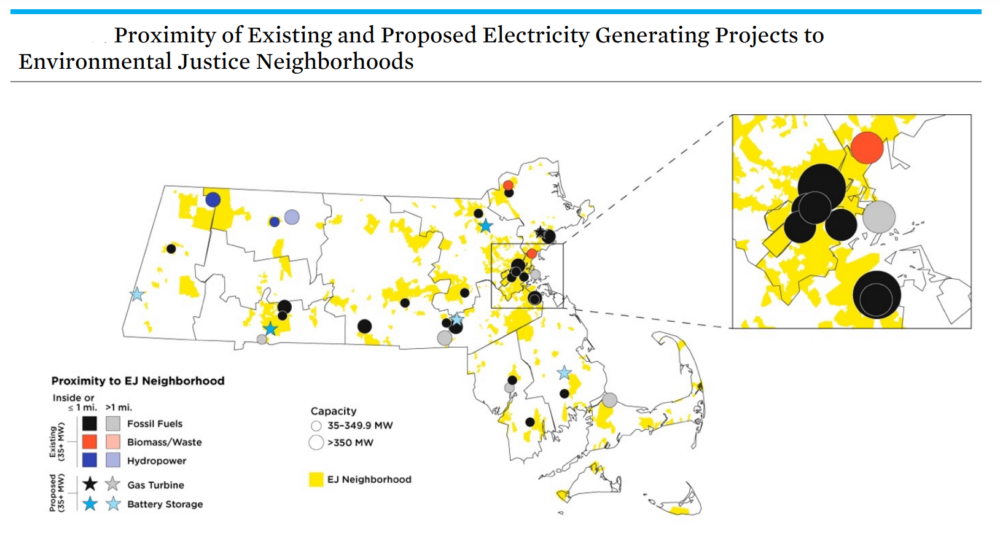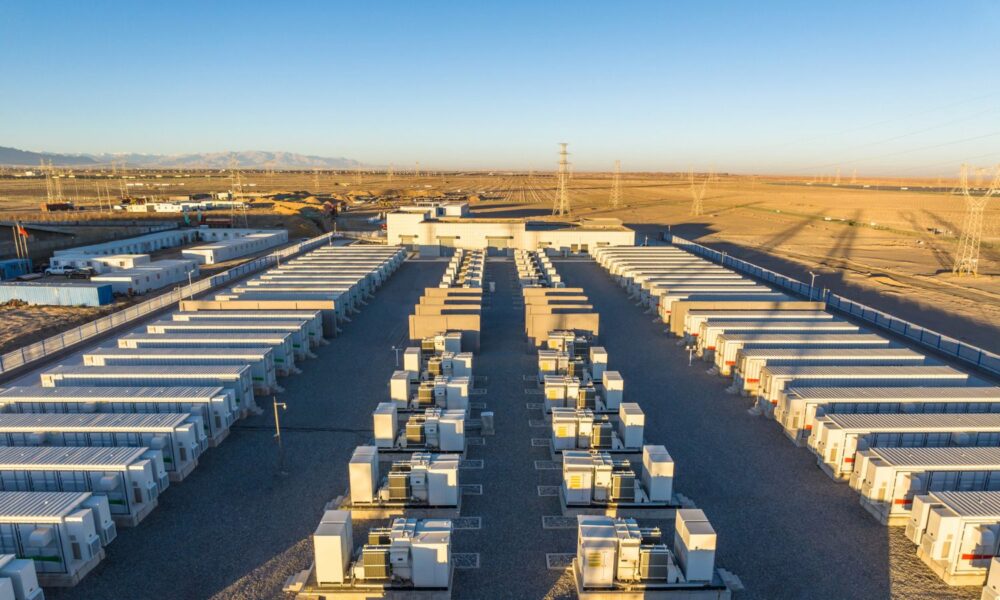Battery storage is essential to integrating more renewable energy into the grid. It provides energy resiliency in the case of natural disasters. It can advance environmental justice by replacing peaker plants, gas or oil plants that run when there is high demand. Peaker plants are dirtier than most power plants and usually sited in low-income communities and communities of color.
There have increasingly been concerns about the safety of large-scale battery storage systems. You may have seen news stories about large battery storage systems, particularly those with lithium-ion batteries, catching fire or exploding. These stories are alarming. Battery failures can emit dangerous gases, and nearby communities are sometimes placed under evacuation orders. First responders have been injured. But large-scale battery storage has actually gotten much safer in recent years, with the failure rate dropping 97% between 2018 and 2023.
Because battery energy storage can provide so many benefits, it’s important to make sure that it is developed as safely and equitably as possible.
Battery storage systems are designed with numerous safety features.
Battery storage systems are modular, built by assembling smaller components into a larger system. The smallest level is an individual battery cell, similar to the batteries you’d put in a flashlight, cellphone, or laptop. Multiple cells are wired together in a module, and multiple modules are placed into an enclosure. Safety features should be included at each level.

Safety features are incorporated into all levels of a battery system. Source: UCS.
At the cell level, different chemical compositions can make a cell more or less prone to thermal runaway, a rapid increase in battery temperature due to chemical reactions. At the module level, cooling and barriers between cells can help keep thermal runaway and heating in one cell from spreading to others. At the enclosure level, insulation can keep fire in one enclosure from spreading, and ventilation keeps the flammable gases released during thermal runaway from building up and creating an explosion hazard.
System integration is also crucial. An electronic system called the battery management system ensures that the system is operating under normal conditions and can do things like turn on a fan if a module gets too hot. Battery management systems should be designed to integrate properly with the rest of a battery storage system.
If a fire does break out in a battery storage system, enclosures are designed to let the fire burn itself out. The rapid venting of gas interferes with some fire suppression systems. Furthermore, even if the fire is put out, cells may still be undergoing thermal runaway and can cause reignition. That’s why storage designers are currently moving toward a “let it burn” approach, allowing the fire to fully burn itself out instead of suppressing it to reduce the risk of explosion and reignition.
Researchers and designers should continue improving the safety mechanisms for battery storage systems, especially for systems that can safely extinguish fires and stop thermal runaway. Governments and developers should work to educate the public about the safety mechanisms incorporated into battery storage systems.
Codes and standards increasingly address lithium-ion battery storage system safety.
Codes and standards are typically developed by model code-making organizations, then become law when adopted by state or local governments. All US states have adopted some version of either the International Fire Code (IFC) or National Fire Protection Association (NFPA) 1, though not necessarily the most recent edition.
Many of the codes governing battery storage systems are not specific to batteries. Battery storage systems are required to obey all relevant building and electrical codes. In addition, there are a few codes written just for energy storage, including lithium-ion batteries. These are NFPA 855 and parts of the IFC, which are largely in agreement. These codes regulate fire safety and explosion prevention for battery storage systems. For example, they provide guidance on system components, such as the types of sprinklers, and require a developer to submit an emergency response plan and safety system information to the local government evaluating the project. These codes also require that large energy storage systems undergo thermal runaway testing to evaluate the fire risk of a system and determine what additional safety measures may be required.
There is arguably room for improvement in current codes and standards. For example, a recent Institute of Electrical and Electronics Engineers conference paper argued that codes do not sufficiently address early detection of battery failure. However, these codes and standards are recognized as the industry standard for battery storage safety, and new versions reflecting updated best practices are released every three years.
States and local governments should adopt the most up-to-date versions of either NFPA 855 or the IFC to ensure battery storage systems are designed according to fire safety best practices.
Fire department preparedness is incredibly important.
Battery storage is a relatively new, rapidly developing technology. Many fire departments may not be familiar with battery fires, which can pose unique safety hazards and firefighting challenges. Batteries in thermal runaway vent toxic and flammable gases, which is important for firefighters to be aware of when responding to a battery fire.
Furthermore, the “let it burn” approach that battery storage enclosures are designed with is different from how departments typically approach fires. Because of the safety hazards and the way battery storage systems are designed, it is important that fire departments work with battery storage developers while a project is in development, and that they receive up-to-date training on the system and how to respond to battery fires.
State or local governments should require battery storage developers to work with fire departments, and for departments to receive up-to-date training on the risks of battery fires and how to fight them. Development of an emergency response planning template for developers and fire departments could help with emergency response planning, especially for smaller departments with fewer resources.
More local governments need to adopt ordinances for siting battery storage.
Because of the safety concerns for battery storage facilities, siting them appropriately is key. Stories abound of communities fighting to keep battery energy storage facilities out, concerned about the risk of fire, toxic gas emissions, and more. Despite the safety considerations and community concerns, there are very few local regulations governing battery storage siting.
A 2023 analysis by Pacific Northwest National Laboratories (PNNL) examined the codes of over 3,300 jurisdictions, including 97 that already had large battery storage systems. They found that only 59 had codes referencing batteries or energy storage, and only 12 had regulations that addressed issues like zoning and permitting. This illustrates a significant lack of local government regulation of battery storage siting. Some states and other organizations have begun creating references. For example, New York State has published a model law that local jurisdictions wishing to regulate battery storage systems can use as a reference.
Local governments should adopt ordinances to address battery storage siting to be better prepared for future project deployments.
Battery storage siting processes must be equitable and engage with communities.
Environmental justice communities have long borne the burden of polluting energy infrastructure. A UCS study showed that in Massachusetts, for example, 82% of gas plants and 87% of other fossil plants are located within one mile of an environmental justice community. A major reason for this is that these communities are often left out of energy infrastructure siting decisions. This is a pattern that should not be replicated for battery storage siting.

A UCS study showed that more than 80% of gas plants and fossil plants are within one mile of environmental justice communities in Massachusetts. Source: UCS.
Community engagement should be more extensive than a simple public comment meeting. Siting processes should be transparent and accessible, and communities should have a voice and a vote. Siting decisions should incorporate a cumulative impacts assessment, which considers a community’s total pollution burden, not just the burden added by a new test facility. Additionally, energy storage should be sited so that benefits go to local communities. As mentioned earlier, energy storage can improve local air quality and relieve pollution burden from peaker plants. It can also provide energy resilience during a natural disaster. Siting decisions should consider where battery storage can provide the greatest community benefits.
State and local governments should ensure that communities are meaningfully involved in battery storage siting processes, and environmental justice communities should have input through mechanisms such as advisory boards or working groups. Siting should incorporate cumulative impacts assessment.
Battery storage is a key part of transitioning to renewable energy and can help address some of the unequal exposure to pollution environmental justice communities face. Because of this, we want to be putting more energy storage on the grid, but we want to make sure we’re doing it in the safest, most equitable way possible.

